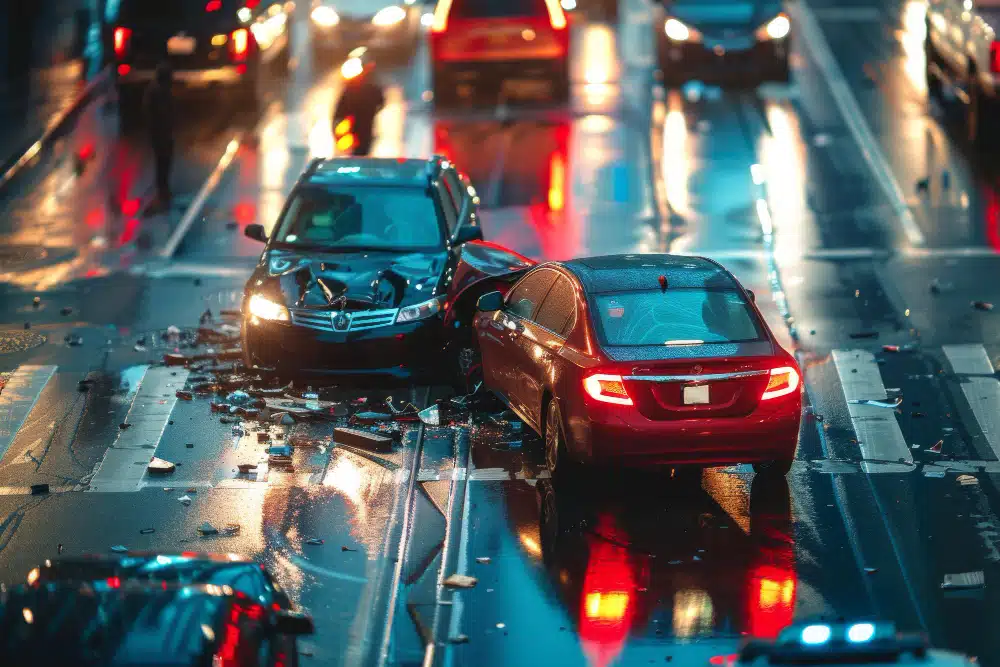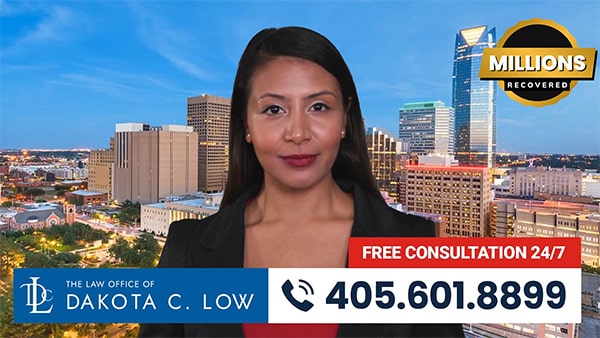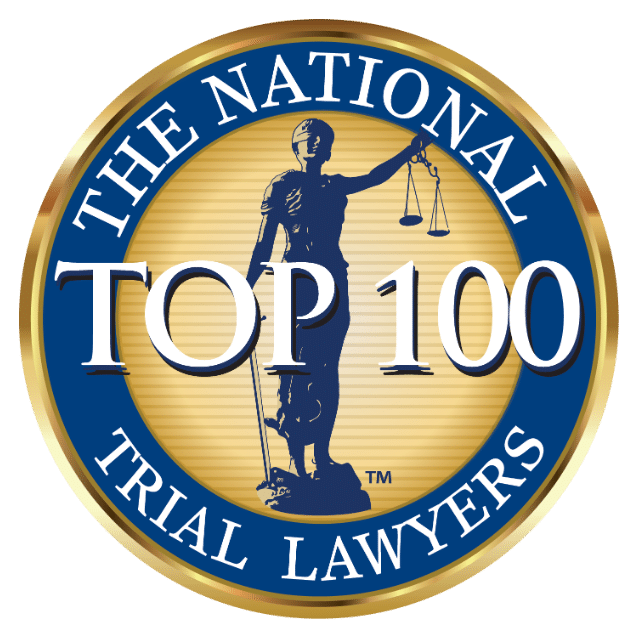Welcome to your comprehensive guide on understanding intersection crashes in Oklahoma. Whether you’re a resident, a commuter, or just passing through, knowing what to expect on the roads can make all the difference when it comes to safety.
In this article, we’ll delve into the factors that contribute to intersection crashes, the most common types of collisions, and the steps you can take to protect yourself and others on the road. Our aim is to equip you with valuable knowledge that will help you make informed decisions behind the wheel.
From distracted driving to speeding and poor weather conditions, intersection crashes can occur due to various reasons. By understanding these factors, you can better anticipate potential risks and take proactive measures to stay safe on the road.
So, whether you’re a cautious driver seeking to enhance your skills or simply interested in learning more about this prevalent issue, join us as we explore intersection crashes in Oklahoma and provide you with the knowledge you need to navigate the roads with confidence.
Common causes of intersection crashes in Oklahoma
Intersection crashes are a major concern on Oklahoma’s roads, and understanding the common causes is crucial for improving safety. One of the primary contributors to these collisions is distracted driving. Whether it’s texting, talking on the phone, or fiddling with the radio, taking your eyes off the road, even for a few seconds, can have devastating consequences at an intersection. Drivers who fail to pay attention to their surroundings, traffic signals, and the actions of other vehicles are at a higher risk of causing or being involved in an intersection crash.
Another common cause of intersection crashes in Oklahoma is speeding. Drivers who exceed the posted speed limit or drive too fast for the current road conditions are less able to react quickly and safely navigate through intersections. This is especially problematic when combined with other factors, such as poor visibility or inclement weather. Excessive speed not only increases the likelihood of a crash but also the severity of the resulting injuries.
Failure to yield the right-of-way is another significant factor in intersection crashes. Drivers who disregard traffic signals, stop signs, or the right-of-way of other vehicles, pedestrians, or cyclists put themselves and others at risk. This can happen when drivers are in a hurry, distracted, or simply unaware of the rules of the road. Intersection crashes caused by failure to yield often result in T-bone or broadside collisions, which can be particularly devastating for those involved.
Understanding the impact of intersection crashes
Intersection crashes can have far-reaching consequences, both for those directly involved and the broader community. The impact of these collisions can be devastating, leading to serious injuries, fatalities, and significant financial and emotional burdens.
One of the most concerning aspects of intersection crashes is the potential for severe injuries. The forces involved in these types of collisions, particularly in T-bone or broadside crashes, can result in devastating injuries such as traumatic brain injuries, spinal cord damage, broken bones, and internal organ damage. These injuries often require extensive medical treatment, rehabilitation, and can have long-lasting effects on the victims and their families.
Beyond the personal toll, intersection crashes can also have a significant impact on the community. The economic costs associated with these collisions, including property damage, medical expenses, lost productivity, and the strain on emergency services, can be substantial. This, in turn, can lead to increased insurance premiums, higher taxes, and a strain on public resources, affecting the entire community.
Moreover, the emotional impact of intersection crashes cannot be overlooked. Families who have lost loved ones or witnessed the aftermath of these collisions can experience profound grief, trauma, and ongoing mental health challenges. The ripple effects of these incidents can be felt for years, underscoring the importance of addressing the root causes and taking proactive measures to prevent them.

Intersection crash statistics in Oklahoma
Oklahoma has seen its fair share of intersection crashes, with alarming statistics that highlight the need for greater awareness and action. According to the latest data from the Oklahoma Highway Safety Office, intersections were the site of over 25,000 crashes in the state in 2020 alone, accounting for nearly 40% of all reported collisions.
Of particular concern are the number of fatal intersection crashes in Oklahoma. In 2020, over 100 people lost their lives in crashes that occurred at or near intersections, representing a significant portion of the state’s total traffic fatalities. These statistics underscore the dangerous nature of these types of collisions and the urgent need to address the underlying factors contributing to them.
Intersection crashes in Oklahoma are not limited to a single geographic area or type of intersection. They occur in both urban and rural settings, at signalized intersections, stop-controlled intersections, and even uncontrolled intersections. This widespread nature of the problem highlights the need for a comprehensive approach to improving intersection safety across the state.
Furthermore, the financial impact of intersection crashes in Oklahoma is substantial. The estimated economic cost of these collisions, including property damage, medical expenses, lost productivity, and other related costs, exceeds $1 billion annually. This staggering figure underscores the significant burden these crashes place on individuals, families, and the broader community.
Factors that contribute to intersection crashes
Intersection crashes in Oklahoma can be attributed to a variety of factors, each of which requires a targeted approach to address the problem effectively. Understanding these contributing factors is crucial for developing and implementing strategies to improve intersection safety.
One of the primary factors is driver behavior, particularly when it comes to distracted driving. As mentioned earlier, activities such as texting, talking on the phone, or engaging in other distractions while behind the wheel can significantly impair a driver’s ability to safely navigate an intersection. Addressing this issue through education, enforcement, and technological solutions is essential.
Another significant factor is speeding and aggressive driving. Drivers who exceed the posted speed limit or fail to adjust their speed to the prevailing road conditions put themselves and others at risk, especially when approaching and navigating through intersections. Enforcement of speed limits, along with public awareness campaigns, can help mitigate this problem.
Poor visibility, whether due to inclement weather, obstructed sightlines, or inadequate lighting, can also contribute to intersection crashes. Drivers may have difficulty seeing traffic signals, oncoming vehicles, or pedestrians, increasing the likelihood of a collision. Improving intersection design, enhancing lighting, and clearing vegetation can help address these visibility issues.
Additionally, the design and configuration of intersections themselves can play a role in the occurrence of crashes. Poorly designed or maintained intersections, with confusing layouts, inadequate signage, or insufficient traffic control measures, can increase the risk of collisions. Addressing these infrastructure-related factors through engineering solutions and regular maintenance is crucial.
Legal implications and consequences of intersection crashes
Intersection crashes in Oklahoma can have significant legal implications and consequences for those involved, underscoring the importance of understanding the relevant laws and regulations.
When an intersection crash occurs, the determination of fault and liability is a critical factor. Depending on the circumstances, drivers may be found partially or fully responsible for the collision, which can have serious legal and financial repercussions. Factors such as failure to yield the right-of-way, disregarding traffic signals, or engaging in negligent driving behavior can all contribute to a finding of fault.
In the event of an intersection crash, the at-fault driver may face a range of legal consequences, including traffic citations, fines, and the potential for criminal charges in cases of reckless or impaired driving. Additionally, the at-fault driver may be held civilly liable for any injuries, fatalities, or property damage resulting from the collision, potentially leading to costly lawsuits and financial liability.
Beyond the individual legal implications, intersection crashes can also have broader legal ramifications. In some cases, government entities responsible for the design, maintenance, and operation of intersections may be held liable if the crash is found to be due to a defect or hazardous condition within the intersection. This can lead to legal action and the potential for significant financial settlements or changes to intersection infrastructure.
Understanding the legal landscape surrounding intersection crashes is crucial for all drivers in Oklahoma. By being aware of their rights and responsibilities, as well as the potential consequences of their actions, drivers can make more informed decisions and take appropriate steps to mitigate the risk of being involved in a collision.
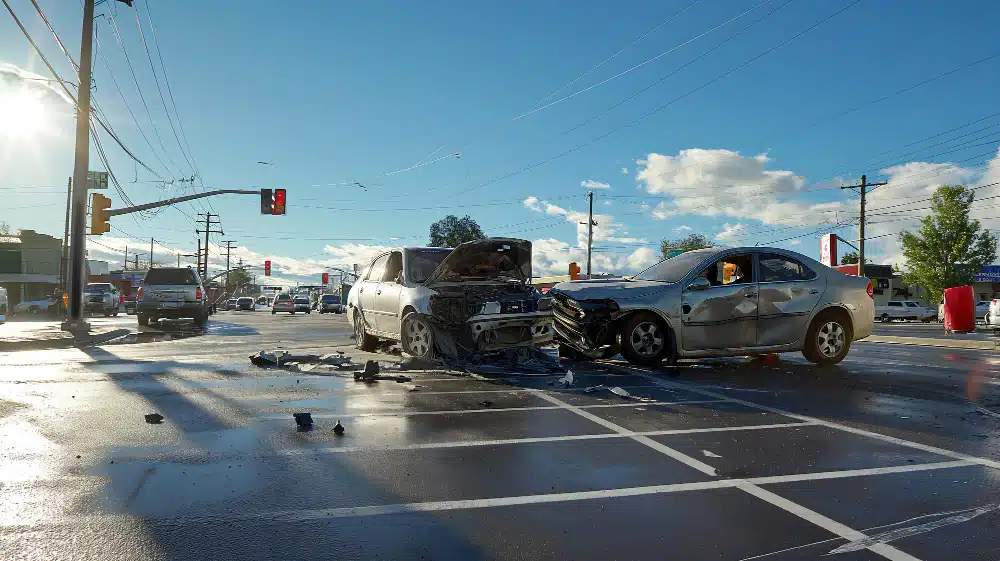
Steps to take after being involved in an intersection crash
Being involved in an intersection crash can be a traumatic and overwhelming experience. However, it is crucial to remain calm and take the necessary steps to protect your rights and ensure the safety of all involved. Here are the key steps to take after being involved in an intersection crash in Oklahoma:
First and foremost, ensure the safety of yourself and any other individuals involved. If possible, move your vehicle to a safe location, such as a nearby parking lot or side street, and turn on your hazard lights to alert other drivers. Provide immediate assistance to any injured parties, but do not attempt to move them unless necessary to prevent further harm.
Next, call emergency services, such as 911, to report the accident and request assistance from law enforcement and medical personnel. Provide the dispatcher with a clear and concise description of the location, the nature of the crash, and any injuries or immediate concerns.
As you wait for the authorities to arrive, gather as much information as possible about the incident. This includes exchanging contact and insurance information with the other driver(s) involved, taking photographs of the scene, and making note of any relevant details, such as traffic signals, weather conditions, or witness accounts.
Once the police arrive, cooperate fully with their investigation and provide a truthful account of the events leading up to the crash. Avoid speculating or admitting fault, as this could potentially be used against you in any subsequent legal proceedings. Instead, focus on providing the facts and answering any questions the officers may have.
If you sustain injuries as a result of the intersection crash, seek medical attention promptly, even if the injuries do not appear severe. This not only ensures your well-being but also creates a record of the incident and any resulting medical treatment, which can be crucial for any future legal or insurance-related matters.
Finally, consider consulting with a qualified attorney who specializes in car accidents and intersection crashes. They can provide valuable guidance on your legal rights, assist with navigating the insurance claims process, and represent your interests in the event of any legal proceedings.
Preventing intersection crashes – tips for drivers
As a driver in Oklahoma, taking proactive steps to prevent intersection crashes is crucial for your safety and the safety of others on the road. By adopting safe driving practices and being aware of the potential risks, you can significantly reduce the likelihood of being involved in a collision at an intersection.
One of the most important things you can do is to eliminate distractions while driving. This means refraining from using your smartphone, adjusting the radio, or engaging in any other activities that take your eyes off the road or your hands off the wheel. Keep your focus on the task at hand and be vigilant for any potential hazards as you approach and navigate through intersections.
Maintaining a safe speed is also essential for preventing intersection crashes. Obey the posted speed limits and adjust your speed accordingly based on the prevailing road and weather conditions. Driving at a speed that allows you to safely react and maneuver through an intersection can greatly reduce the risk of a collision.
Paying attention to traffic signals and signs is another crucial step in preventing intersection crashes. Familiarize yourself with the traffic laws and regulations in Oklahoma, and be sure to come to a complete stop at red lights and stop signs. Yield the right-of-way to other vehicles, pedestrians, and cyclists as required, and be prepared to react quickly to any unexpected situations.
Additionally, be aware of your surroundings and anticipate the actions of other drivers as you approach an intersection. Scan the intersection for any potential hazards, such as vehicles that may be running a red light or turning without signaling. By being proactive and defensive in your driving, you can increase your chances of avoiding a collision.
Finally, consider taking a defensive driving course or refresher training to enhance your skills and knowledge of safe driving practices. These programs can provide valuable insights and strategies for navigating intersections and other challenging driving situations, ultimately helping you become a safer and more confident driver.
Efforts to improve intersection safety in Oklahoma
In recognition of the significant challenges posed by intersection crashes in Oklahoma, various government agencies, transportation authorities, and community organizations have been working to implement a range of initiatives aimed at improving intersection safety across the state.
One of the key efforts is the Oklahoma Highway Safety Office’s (OHSO) Intersection Safety Program. This initiative focuses on identifying high-risk intersections, analyzing crash data, and implementing engineering solutions to enhance intersection design and traffic control measures. This includes the installation of traffic signals, stop signs, and improved signage, as well as the optimization of traffic flow and the implementation of innovative technologies, such as adaptive traffic signals.
The Oklahoma Department of Transportation (ODOT) has also been actively involved in improving intersection safety. Through its Intersection Safety Improvement Program, ODOT conducts regular assessments of intersections, identifies areas for improvement, and invests in infrastructure upgrades. This includes the construction of roundabouts, the implementation of protected left-turn phases, and the enhancement of visibility and lighting at intersections.
In addition to these infrastructure-focused efforts, there is also a strong emphasis on education and awareness campaigns aimed at changing driver behavior. The OHSO, in partnership with local law enforcement agencies and community organizations, has launched various public awareness initiatives to promote safe driving practices, such as the dangers of distracted and impaired driving, the importance of obeying traffic signals, and the need to yield the right-of-way at intersections.
Furthermore, the state of Oklahoma has implemented legislative measures to address intersection safety. This includes the enactment of laws that increase penalties for traffic violations, such as running red lights or stop signs, and the implementation of automated enforcement systems, such as red-light cameras, to deter dangerous driving behavior at intersections.
While these efforts have shown promise in reducing the frequency and severity of intersection crashes, there is still more work to be done. Continued collaboration between government agencies, transportation authorities, law enforcement, and the community will be crucial in addressing this pressing issue and creating a safer driving environment for all Oklahomans.
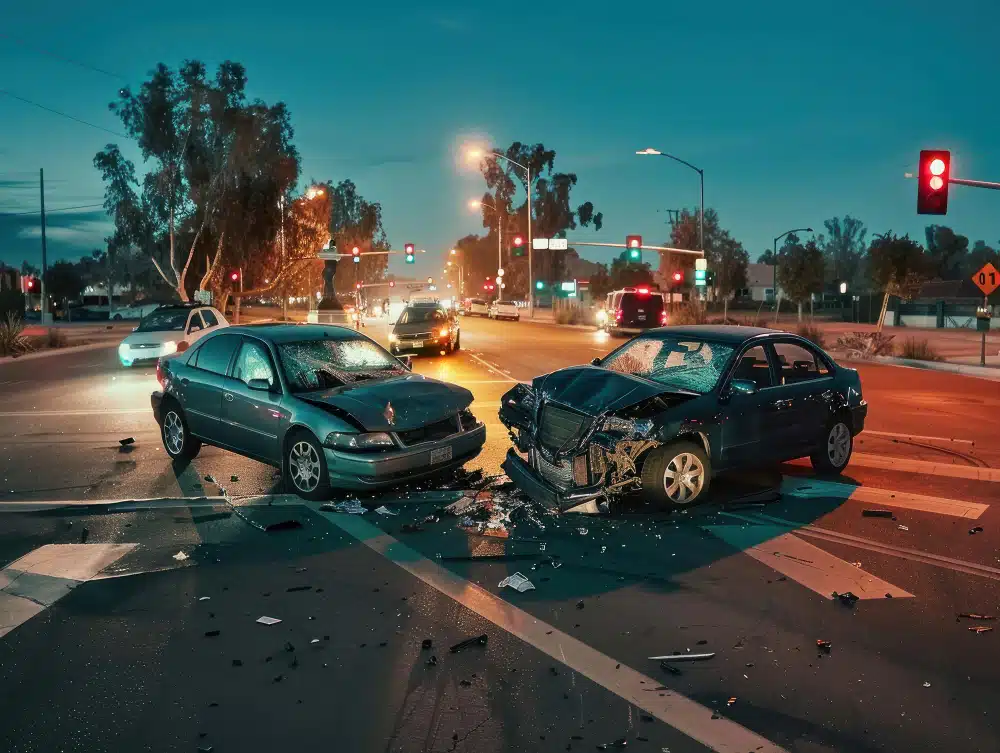
Conclusion and call to action
Intersection crashes in Oklahoma are a significant concern, with far-reaching consequences for individuals, families, and the broader community. By understanding the common causes, the impact of these collisions, and the steps that can be taken to prevent them, we can work together to create a safer and more secure driving environment.
As drivers, it is our responsibility to be vigilant, attentive, and responsible behind the wheel. By eliminating distractions, obeying traffic laws, and prioritizing safety, we can each play a crucial role in reducing the number of intersection crashes in Oklahoma. Moreover, by supporting the ongoing efforts of government agencies, transportation authorities, and community organizations, we can contribute to the broader push for improved intersection safety.
Remember, every journey, every intersection, and every decision we make as drivers can have a profound impact on the safety of ourselves and others. Let us commit to being proactive, responsible, and vigilant in our approach to navigating the roads, ensuring that we arrive at our destinations safely and without incident.
Together, we can make a difference in the fight against intersection crashes in Oklahoma. By staying informed, adopting safe driving practices, and advocating for continued improvements in infrastructure and safety measures, we can create a future where the roads are safer for all who use them. Let us take this call to action and work towards a more secure and responsible driving environment for all Oklahomans.
